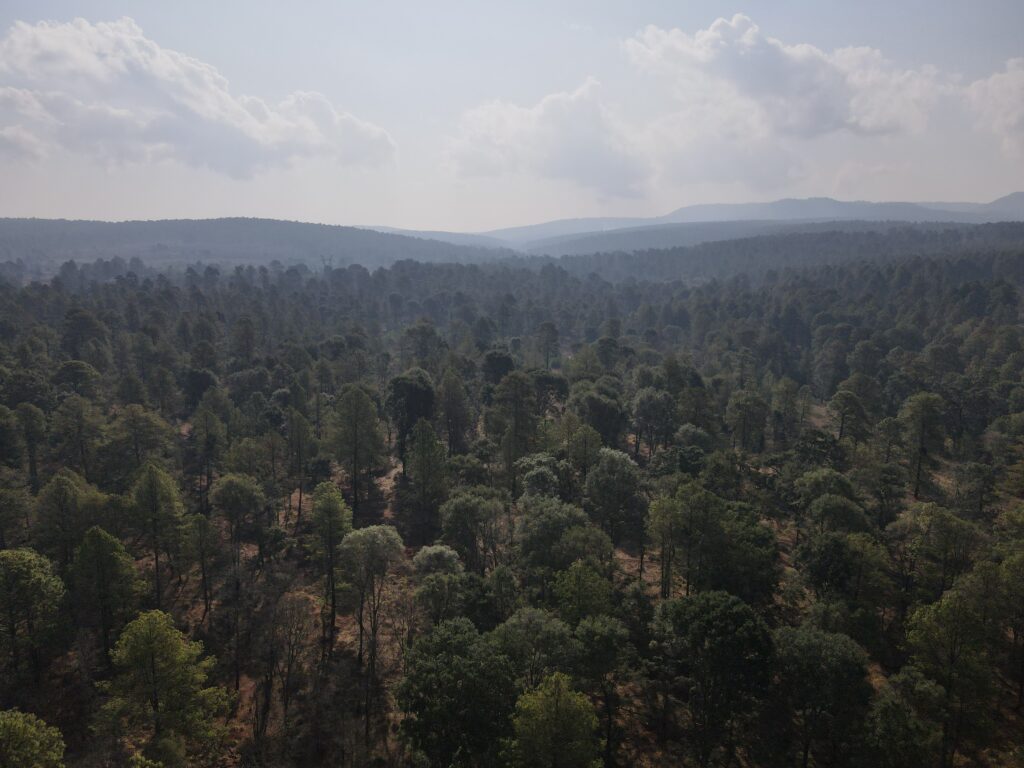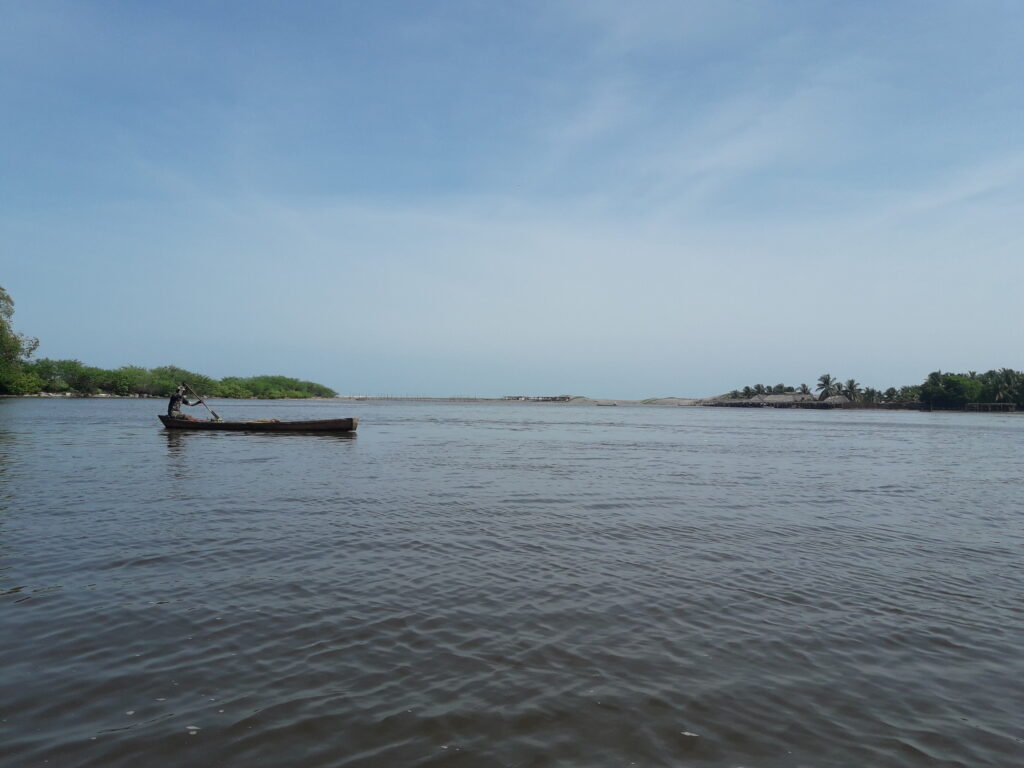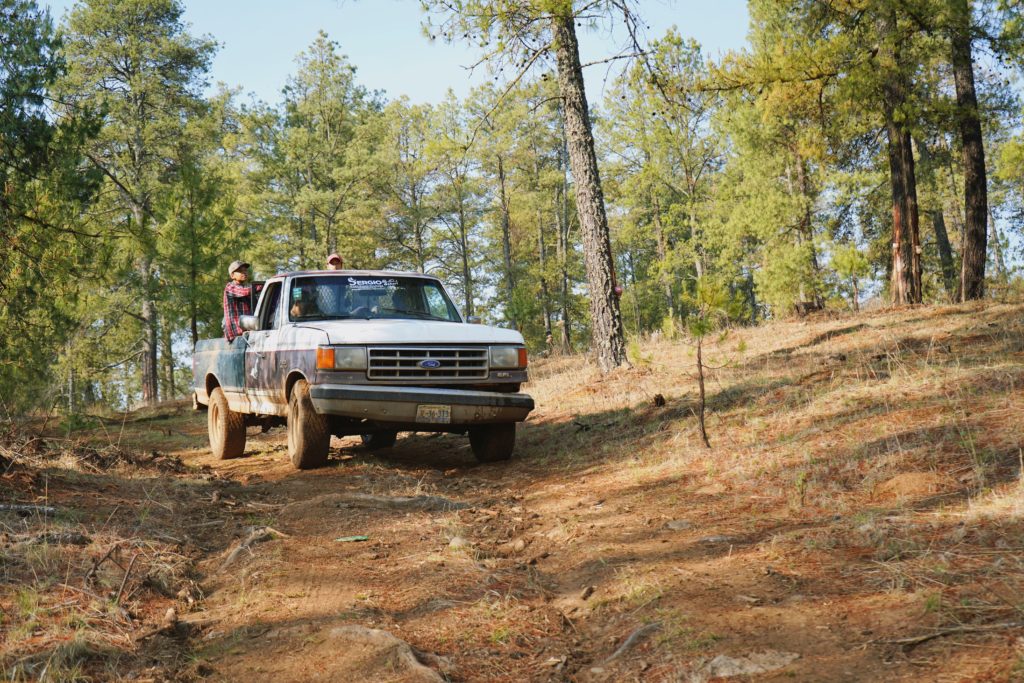
Case study
Charting Nepal’s sustainable future in the Sacred Himalayan Landscape
Spanning the eastern Himalayas from Nepal through India and into Bhutan, the Sacred Himalayan Landscape stands out globally for its unique habitats, ecosystem, and biodiversity. Recognizing its significance, RECOFTC has identified a section of this landscape in Nepal as one of its 10 focal landscapes. RECOFTC’s LandScale baseline study provides a comprehensive evaluation of the area’s ecological and socio-economic systems, aiming to understand their interconnectedness and to establish a baseline against which future sustainability efforts can be measured.
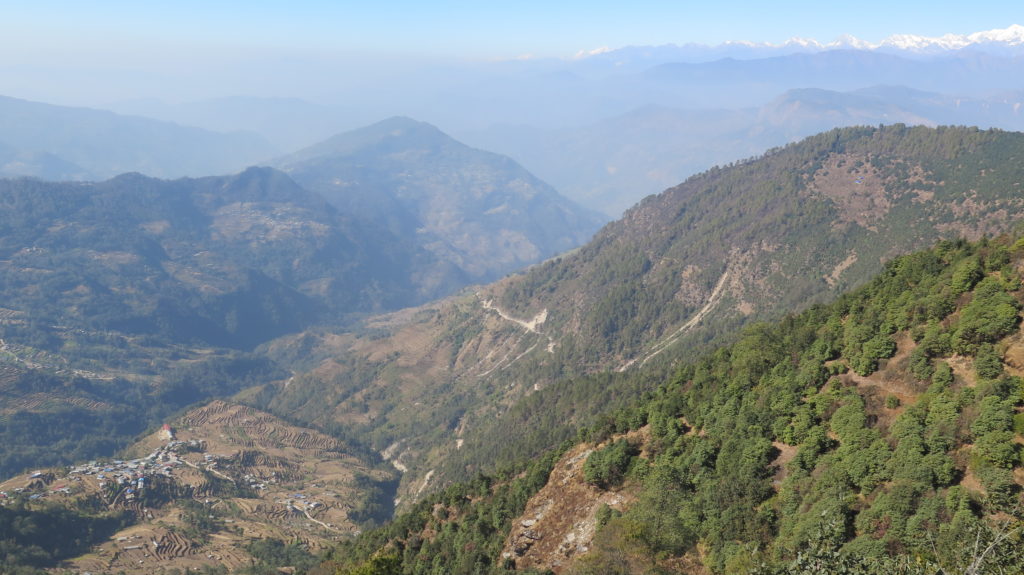
The Sacred Himalayan Landscape in Nepal (referred to here as SHL–Nepal) encompasses over 463,747 hectares of diverse terrain, ranging from tropical to alpine climates due to its mountainous topography. Within the SHL-Nepal, RECOFTC has been working in the Sindhupalchok and Dolakha districts since 2011, chosen for the LandScale pilot to address multiple impact assessment gaps and the substantial challenges these present to project implementation.
RECOFTC conducted the baseline study between 2022 to 2024, during which they evaluated 42 metrics within the four pillars of LandScale’s assessment framework—ecosystems, governance, human well-being, and production. Findings from the assessment will help RECOFTC strengthen collaboration with like-minded stakeholders, namely local government bodies. RECOFTC Nepal also seeks to explore opportunities for collaboration with the private sector and other entities to further drive positive change in the landscape.
Baseline assessment findings
Balancing conservation efforts and community engagement
Conservation efforts in SHL–Nepal have yielded successes and encountered challenges. While local communities play a pivotal role in conservation activities within and around the landscape’s protected areas, evolving land use patterns have led to the degradation of 4.46% of its forested area and an annual forest conversion rate of 0.23%.
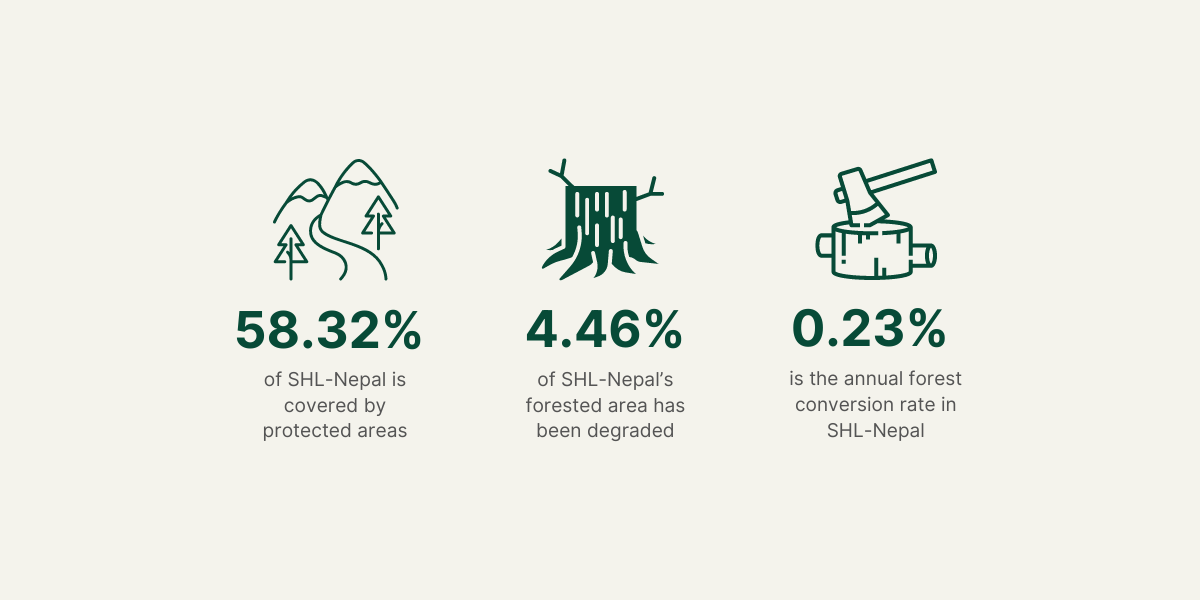
Despite these challenges, there is a growing awareness, especially at the community level, of the pressing issue of natural habitat degradation. This underscores the need for a more comprehensive conservation strategy that extends beyond traditional protected areas to safeguard and conserve biodiversity.
Ensuring sustainable land management and planning
A considerable portion of SHL–Nepal has formalized land tenure rights and enforceable land-use plans. However, there is a lack of comprehensive legal recognition of property ownership and effective enforcement of zoning regulations for land use, which remain insufficiently documented. This lack of documentation can lead to conflicts over land use and undermine efforts to implement sustainable management practices.
Improving land tenure security is imperative, alongside establishing collaborative platforms for stakeholders to convene, exchange knowledge, and collectively make decisions. Additionally, securing financial resources from diverse public, private, and international sources is crucial to sustain sustainable landscape initiatives effectively. By improving land tenure and securing financial resources, SHL–Nepal can better protect its ecosystems and ensure the long-term sustainability of its landscape and communities.
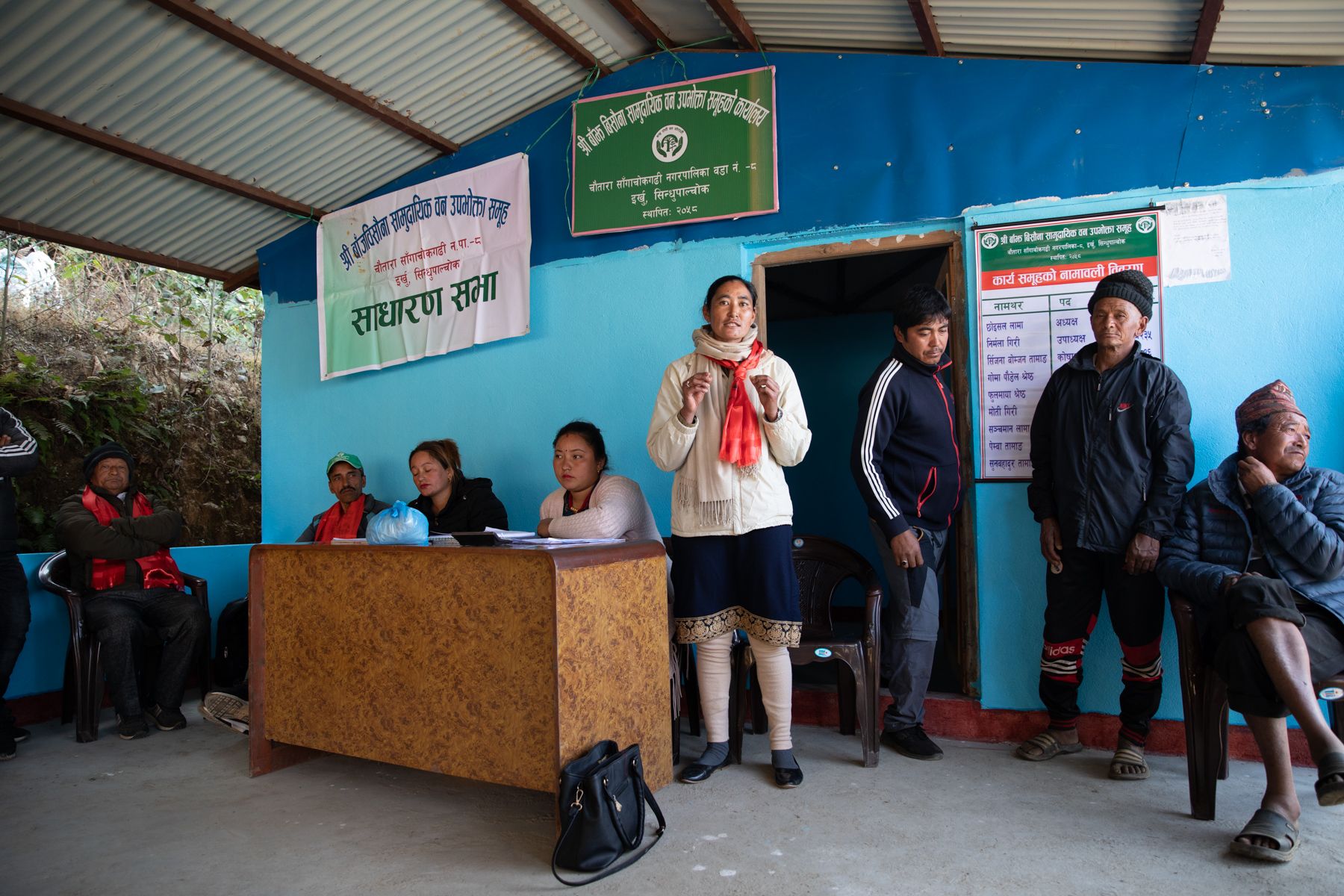
Promoting sustainable agriculture and livelihood diversification
Traditional agricultural practices are prevalent in SHL–Nepal, with agriculture occupying over a quarter of the land and supporting approximately 80% of households as their main source of income. However, most of the agricultural production remains small-scale, with limited investment in large-scale commercial commodity production. While not inherently disadvantageous, this situation requires strategic marketing of small-scale enterprises to attract investment. Research is needed to identify potential flagship commodities for the area while maintaining ecological sustainability standards.

Furthermore, promoting the cultivation of non-timber forest products through agroforestry systems or sustainable harvesting methods can help diversify livelihood options for local communities. Products like black cardamom, coffee, and handmade Daphne paper have the potential to contribute significantly to local economies while supporting the livelihoods of residents.
Addressing socioeconomic disparities and infrastructure gaps
Systemic challenges such as limited access to healthcare and disparities in education underscore broader socioeconomic disparities in SHL–Nepal. Alarmingly, 80% of the total population lacks access to essential health services. Additionally, infrastructural deficits persist, with many households lacking basic amenities like safe water, sanitation, and electricity.

Addressing these challenges necessitates holistic interventions that not only tackle immediate issues but also address the multifaceted underlying societal systems hindering gender equity and social inclusion.
RECOFTC’s work in SHL–Nepal
RECOFTC has developed a forest landscape vulnerability assessment tool to empower local communities in identifying their vulnerabilities to climate change impacts, fostering a sense of ownership in addressing concerns.
The tool’s application in SHL–Nepal in 2023 led to the identification of five nature-based solutions—recharge pond construction, bamboo plantation, multi-layered agroforestry, gully treatment using vegetative measures, and firefighting squad formation. These solutions hold promise for mitigating climate change effects.
The local government of Sangachokgadhi, Sindhupalchok has embraced the recommended solutions and has committed to co-finance all five initiatives, surpassing RECOFTC’s initial funding.
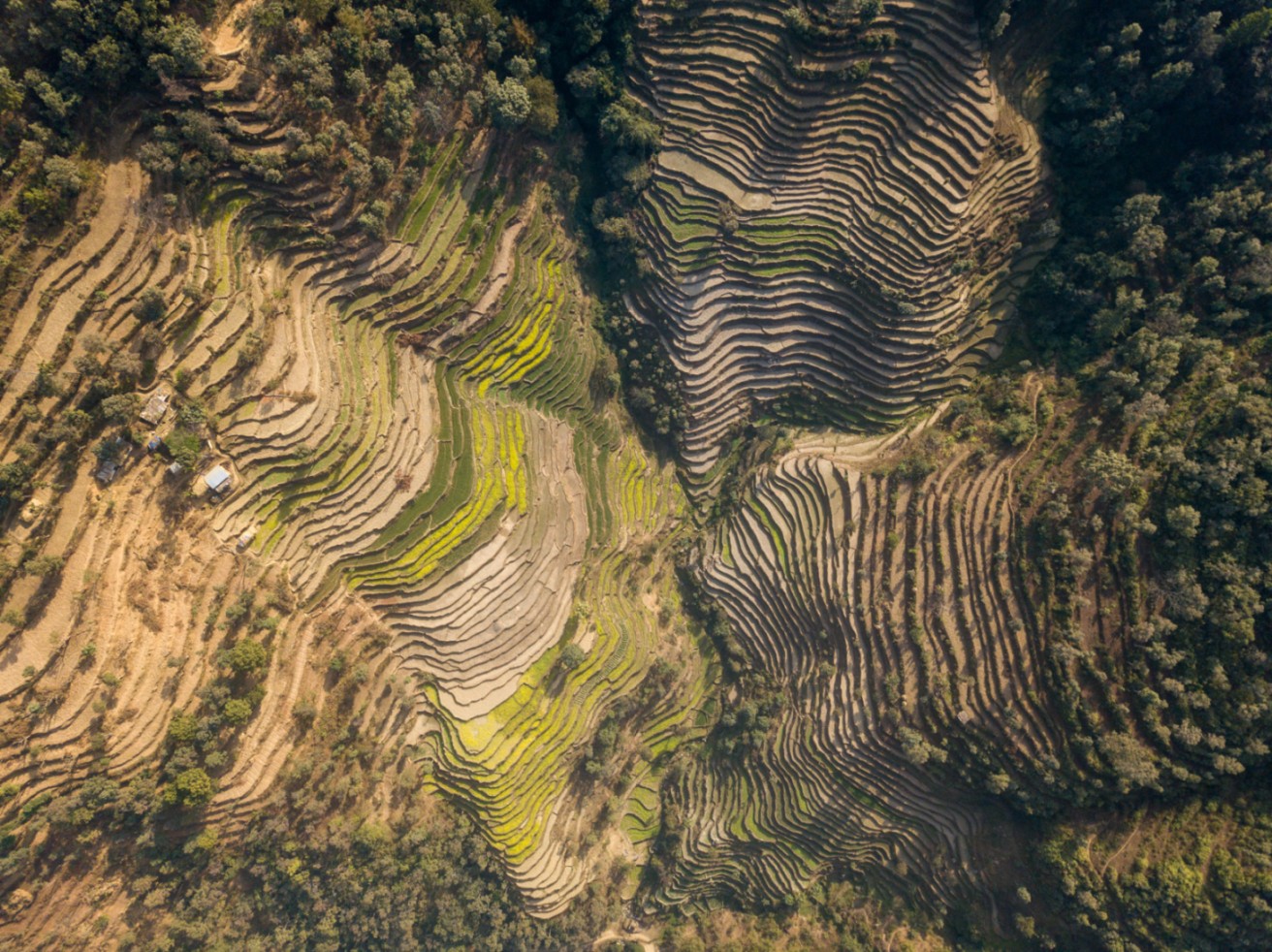
David Ganz, Executive Director of RECOFTC, says, “We want to ensure that the strategies we implement are data driven. And we also want to look at implementation. The insights we gain give us feedback on the strengths and weaknesses of our approaches so that we can improve upon them.” The LandScale assessment, he notes, is a step forward for the SHL–Nepal and RECOFTC.
The exemplary cooperation between RECOFTC and the local government showcases the potential for effective partnership between grassroots organizations and governmental bodies, paving the way for sustainable environmental management practices that benefit both communities and ecosystems alike.
“We are hopeful that the LandScale assessment and subsequent efforts pave the way for leveraging data and evidence to foster greater involvement of government, non-government, and private actors,” says Sudha Khadka, Country Director of RECOFTC Nepal. “This propels us towards deeper engagement and meaningful transformation, thereby bringing significant positive impacts on the lives of people within the Sacred Himalayan Landscape.”

Learnings from the LandScale assessment process
The baseline assessment process has been instrumental in strengthening RECOFTC’s understanding of landscape-level monitoring. The LandScale framework’s comprehensive assessment, coupled with the quality data and standardization it offers, has proven invaluable.
The validation process for the assessment was complex, characterized by the evolving nature of the LandScale platform and multiple stages involved. These steps, including initial validation by LandScale, secondary review by local reviewers, and integration of suggested revisions, were crucial and necessary.
Drawing from this experience, RECOFTC has adopted a similar approach to monitoring other focal landscapes, recognizing LandScale’s potential as a pioneer in driving sustainability at a holistic landscape level.
With successful partnerships, RECOFTC aims to set an example for other stakeholders in the Asia Pacific region. They encourage engagement with their initiatives, evaluation and contribution of suggestions, and active participation in their transformational programs.
However, sustaining these efforts necessitates funding, especially given the landscape’s current lack of resources for future assessments. Continued financial support will be essential for advancing RECOFTC’s work in SHL–Nepal.
To find out more, read the full LandScale report on the Sacred Himalayan Landscape profile.
